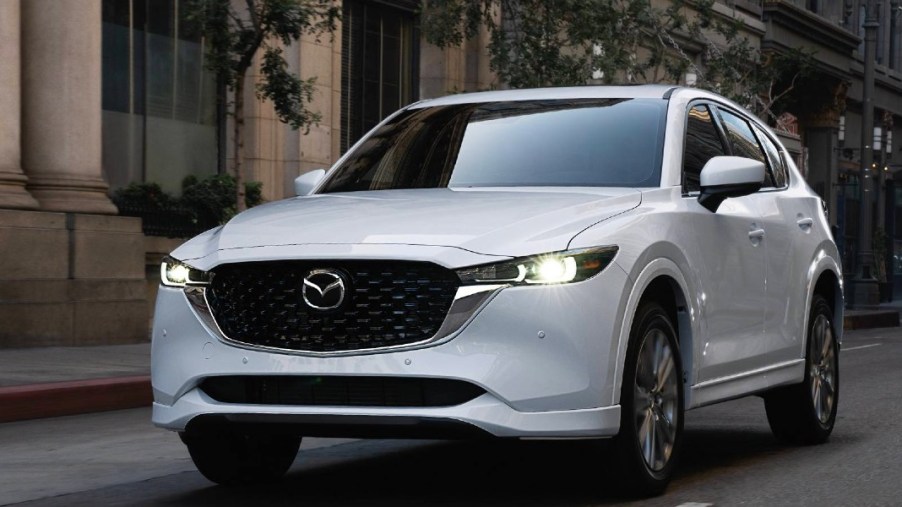
Mazda Sales Are Really Trending in the Right Direction
Mazda has always played third chair in the United States for popularity when compared to its fellow Japanese rivals, Toyota and Honda. However, the automaker has continued to gain momentum in recent years, and if its sales figures through the first five months of 2023 are any indication, Mazda seems primed to continue eating into the popularity of more brands.
Mazda is seeing a surge in popularity
Figures from GoodCarBadCar show business is booming at Mazda. Numbers were up 117% for the month of May versus 2022, giving the brand the biggest year-over-year increase of all automakers to release their figures for May as of this writing. The brand sold 33,262 units in May, up from 15,312 during May 2022.
Mazda’s increased numbers align with other brands as Honda, Hyundai, Kia, Subaru, Toyota, and their luxury divisions (excluding Subaru, which doesn’t have one) had better year-over-year numbers, but none matched Mazda’s growth.
Honda was up 53%, a notable figure but one that still pales in comparison to Mazda’s. Toyota, meanwhile, was up just 2.76% in May year-over-year.
The increased numbers across the board for Japanese automakers are likely due in part to a steadier supply of cars on dealer lots versus this time last year as supply chain issues among automakers has waned. But these stats also underscore that, of the brands moving those cars off the lot, none can compare with the success of Mazda in May.
Mazda’s yearly figures are also on track for a standout 2023. The brand has moved over 155,000 cars through the first five months of 2023 compared to 127,000 models during the same time period last year—an increase of 22%.
That places Mazda only behind Acura—which is up 32%—for increased year-to-date sales so far into 2023. Similar to monthly numbers, year-to-date figures are up across the board for nearly all Japanese and Korean automakers—Toyota is the exception as its numbers are down 6%—but the year-to-date increases of Mazda’s rivals trail far behind the brand.
Mazda increased sales could be a positive harbinger
Mazda’s increased sales are likely due in part to the brand reshaping its lineup and introducing new models over the last two years. The Mazda CX-3 was cut from the lineup in 2022, and in its place is the slightly larger, more modern, and subjectively better looking CX-30. Meanwhile, the CX-5 and CX-50 both occupy space in the competitive compact crossover class with the CX-50 offering a more active lifestyle-oriented option. The CX-9 continues to be one of the more upscale and fun-to-drive midsize SUVs.
The brand still has two of its stalwarts in the wings, the Mazda3 sedan/hatchback and venerable MX-5.
Though Mazda is keeping its focus primarily on internal combustion, the brand’s first all-electric offering, the MX-30, is serving as a litmus test for the automaker’s electrified future.
Much of the brand’s continued success will rely on the CX-90, which will debut for the 2024 model year and serve as the CX-9’s replacement. The CX-90 is larger than its predecessor and continues Mazda’s focus on providing luxe accommodations and styling for a non-luxury price.
As such, the CX-90 will be available with a turbocharged inline-six engine and a mild hybrid system, a recent hallmark of the midsize luxury class. The CX-90 is also available as a plug-in hybrid, the first for the brand.
Mazda’s recent figures show more buyers are making the switch to the brand, and with its lineup being refreshed quite drastically over the past few years for the better, its momentum seems likely to continue.



